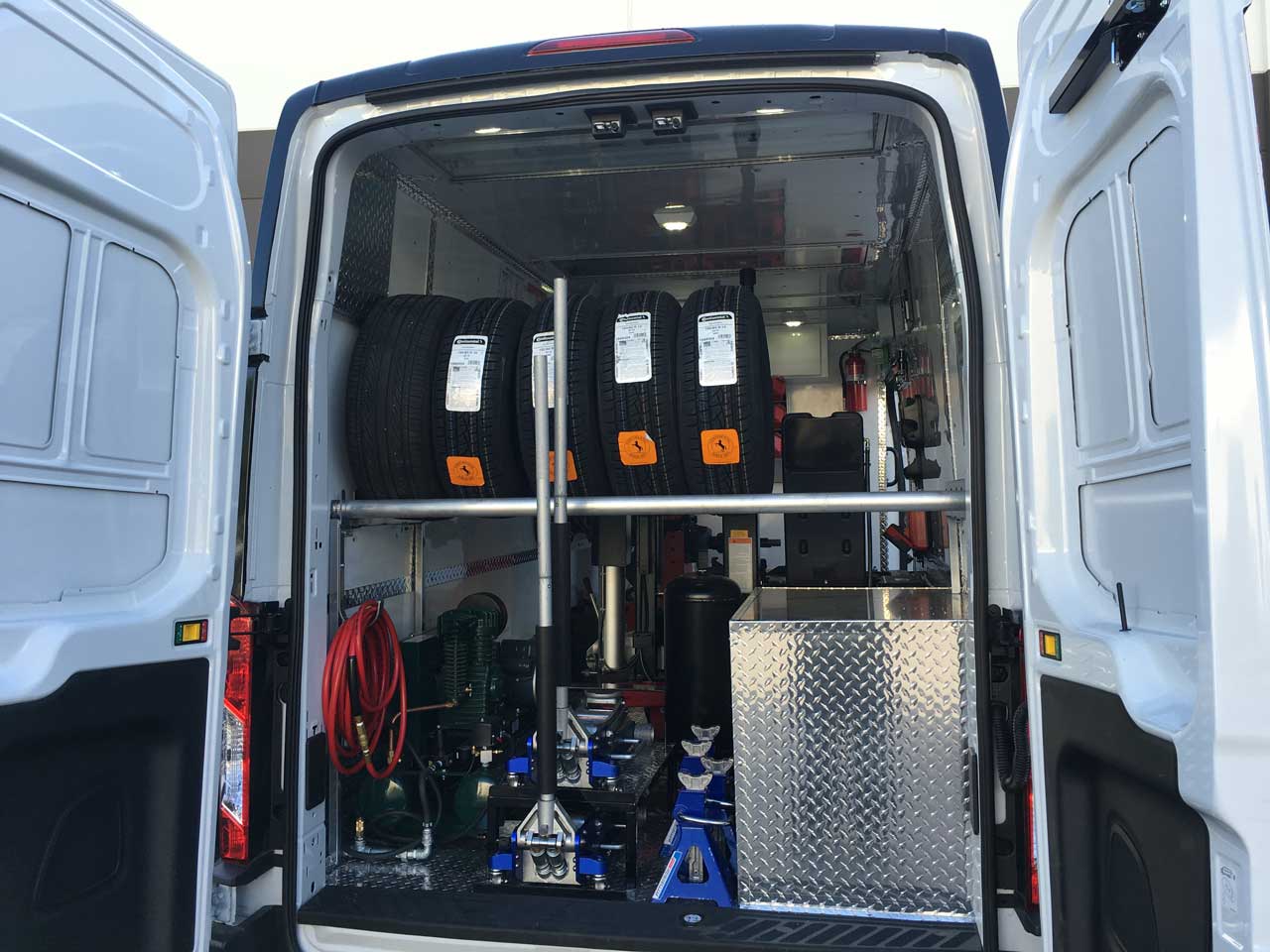Tire Solution: Proven Approaches for Optimal Tire Upkeep and Care
From making certain proper tire pressure to routine turning and positioning, there are tested approaches that can significantly prolong the life expectancy of your tires and boost total driving experience. Allow's delve into the globe of tire solution and discover the secrets to keeping your tires in first-class form for the lengthy haul - Mobile Tire Change Las Vegas.
Relevance of Tire Stress
Adequate tire pressure advertises better fuel performance, as under-inflated tires can lead to increased rolling resistance, creating the engine to function more challenging and consume more gas. Appropriate tire pressure guarantees even walk wear, boosting tire durability and conserving cash in the lengthy run by postponing the requirement for premature substitutes. Routinely inspecting and readjusting tire pressure, particularly in the past lengthy trips, is an easy yet efficient method to boost vehicle performance, extend tire life expectancy, and prioritize security on the road.
Tire Rotation Guidelines
When taking into consideration tire turning standards, it is vital to understand the significance of this maintenance task in making the most of tire life expectancy and maintaining optimal vehicle performance. Tire rotation involves transforming the placement of each tire on a vehicle to ensure also step wear. Front tires have a tendency to use quicker than back tires as a result of guiding forces, making routine rotation vital for balanced wear patterns. The advised turning pattern differs depending upon whether a car is front-wheel, rear-wheel, all-wheel, or four-wheel drive. Generally, tires ought to be rotated every 5,000 to 7,500 miles, or as suggested in the automobile guidebook. Ignoring tire rotation can result in irregular wear, influencing handling, traction, and potentially compromising lorry security. By adhering to proper rotation standards, motorists can prolong the life of their tires, improve gas effectiveness, and enhance total driving experience. Routine turning is a basic yet efficient maintenance practice that adds substantially to tire longevity and lorry performance.

Benefits of Wheel Placement
Guaranteeing correct wheel alignment after tire rotation is critical for maintaining balanced wear patterns and making best use of car efficiency. Wheel placement refers to the adjustment of the angles of the wheels to the maker's requirements. Among the key benefits of wheel positioning is enhanced steering and dealing with action. When the wheels are effectively straightened, it reduces steering effort, guaranteeing a smoother and much more controlled driving experience. Furthermore, right wheel placement assists to expand the life-span of your tires. Misaligned wheels can create irregular tire wear, bring about early tire substitute and raised upkeep expenses.

Tire Tread Deepness Examine
Executing a regular assessment of tire step depth is vital for keeping secure driving conditions and extending the life expectancy of your tires. The step on your tires plays an important duty in providing grip, specifically in slippery or wet conditions. To inspect your tire step deepness, you can make use of a step depth gauge or the penny examination. The suggested walk deepness goes to the very least 2/32 of an inch. If find the step deepness is listed below this limit, it is time to change your tires to ensure optimal performance and security on the road. Uneven tread wear can indicate issues with tire pressure, suspension, or positioning, highlighting the importance of normal step depth checks. Neglecting to keep track of and preserve appropriate tread depth can bring about lowered hold, longer braking distances, and an increased threat of hydroplaning. By including tire walk depth checks into your regular maintenance timetable, you can drive with self-confidence knowing that your tires are in leading condition.
Seasonal Tire Evaluation
Seasonal tire evaluation is a fundamental aspect of tire maintenance that ensures tires are all set to encounter the obstacles postured by various weather condition conditions. In preparation for winter season, it is vital to inspect the tire pressure frequently as chilly temperatures can cause click over here tire stress to drop. By performing routine seasonal tire evaluations, vehicle drivers can lengthen tire lifespan, boost fuel effectiveness, and most significantly, guarantee a safe driving experience in varying weather conditions.
Conclusion
To conclude, maintaining proper tire pressure, turning tires consistently, lining up wheels appropriately, monitoring tread deepness, and carrying out seasonal inspections are crucial methods for optimal tire treatment. By complying with these shown approaches, chauffeurs can guarantee their tires last longer, execute much better, and add to general lorry security. It is essential to focus on tire maintenance to stop accidents, enhance gas effectiveness, and lengthen the lifespan of tires.
Ample tire pressure promotes far better fuel effectiveness, as under-inflated tires can lead to raised rolling resistance, causing the engine to function tougher and consume more gas.When considering tire turning standards, it is important to recognize the value of this maintenance task in optimizing tire life-span and maintaining ideal lorry efficiency. Seasonal tire evaluation is a basic facet of tire maintenance that guarantees tires are prepared to encounter the obstacles posed by different weather condition problems. By performing regular seasonal tire inspections, chauffeurs can extend tire life expectancy, improve gas performance, and most importantly, ensure a protected driving additional resources experience in differing weather problems.
In verdict, keeping correct tire stress, revolving tires consistently, straightening wheels appropriately, monitoring tread depth, and conducting seasonal inspections are important practices for optimal tire care.